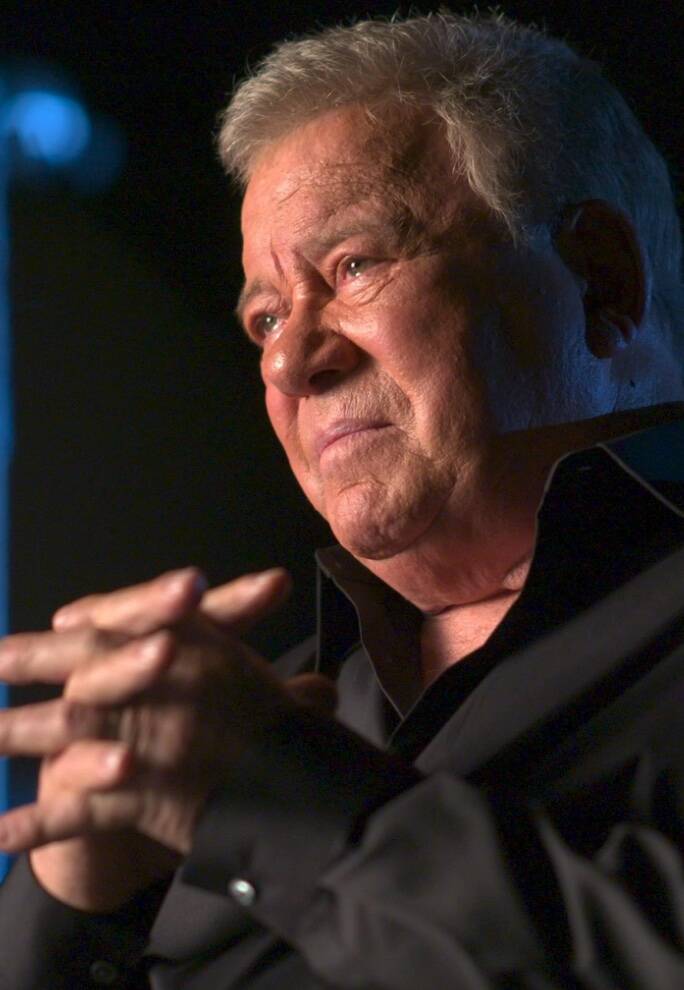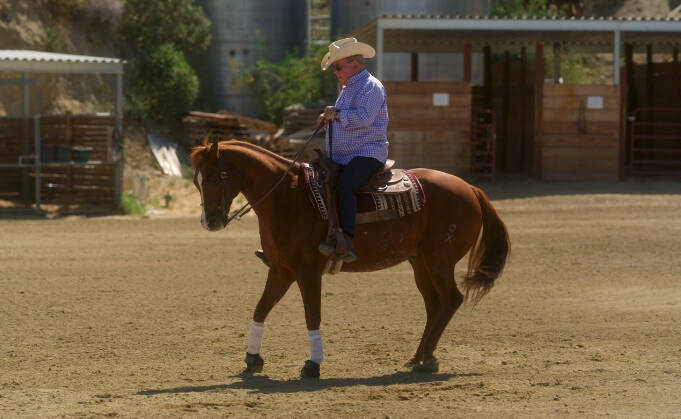Documentary brings Shatner down to Earth
Advertisement
Read this article for free:
or
Already have an account? Log in here »
To continue reading, please subscribe:
Monthly Digital Subscription
$0 for the first 4 weeks*
- Enjoy unlimited reading on winnipegfreepress.com
- Read the E-Edition, our digital replica newspaper
- Access News Break, our award-winning app
- Play interactive puzzles
*No charge for 4 weeks then price increases to the regular rate of $19.00 plus GST every four weeks. Offer available to new and qualified returning subscribers only. Cancel any time.
Monthly Digital Subscription
$4.75/week*
- Enjoy unlimited reading on winnipegfreepress.com
- Read the E-Edition, our digital replica newspaper
- Access News Break, our award-winning app
- Play interactive puzzles
*Billed as $19 plus GST every four weeks. Cancel any time.
To continue reading, please subscribe:
Add Free Press access to your Brandon Sun subscription for only an additional
$1 for the first 4 weeks*
*Your next subscription payment will increase by $1.00 and you will be charged $16.99 plus GST for four weeks. After four weeks, your payment will increase to $23.99 plus GST every four weeks.
Read unlimited articles for free today:
or
Already have an account? Log in here »
Hey there, time traveller!
This article was published 22/03/2024 (593 days ago), so information in it may no longer be current.
There’s been a spate of celebrity documentaries recently, with new films about Arnold Schwarzenegger, Jennifer Lopez, Sylvester Stallone, Albert Brooks, Jon Batiste and Michael J. Fox.
These profiles hold out the promise of realness, but they rest on a tricky bargain: the filmmaker gets a lot of access, and the subject (mostly) gets to tell the story he or she wants.
In You Can Call Me Bill, the deal has been struck between Star Trek star William Shatner and filmmaker Alexandre O. Philippe. The results are, in some ways, what any Shatner lover could want – a bit funny, a bit teary, a bit hammy and always boldly, gloriously Shatner-centric.

Vortex Media
William Shatner talks and talks and talks in a new documentary about his life.
As Shatner talks — and talks and talks and talks — about life and death and love and work and showbiz and trees, a sense of vulnerability sneaks in. We start to see some of his fears and regrets. This show of candidness might involve some acting, but that’s not to say Shatner is being insincere. It’s more that at this point in the Canadian actor’s long life — he turns 93 today — Shatner the performer and Shatner the man have become fused, not just for passionate superfans but maybe for Shatner himself.
Philippe specializes in deep-dive documentaries about pop culture, having made films on The Exorcist (Leap of Faith), the influence of The Wizard of Oz on David Lynch (Lynch/Oz) and the representation of Monument Valley in film (The Taking).
Here the Swiss-born filmmaker presents an extended interview with Shatner under strong lights on a darkened sound stage, cut with footage from Shatner’s seven-decade career.
The film is divided into chapters, which are thematic rather than chronological. There are mediations on the interconnectedness of life on Earth, our relationships with animals and our environmental future.
There’s a section in which Shatner talks about his craft. After working at Canada’s Stratford Festival and in the early days of American television, Shatner took on his most famous role as Captain James T. Kirk of the Starship Enterprise.
Shatner’s early acting heroes were Laurence Olivier and Marlon Brando, representing the British school and the American school, respectively, and being positioned between them seems like a quintessentially Canadian situation.
Shatner eventually developed his own acting style, one that is idiosyncratic and highly recognizable. He claims he doesn’t really get most Shatner impersonations, though, especially the “Every. Word. Is. Its. Own. Sentence.” versions.
Some of Shatner’s best overacting is seen in his good twin/bad twin work, not just in Star Trek —where the duality of man came up a couple of times — but across genres, including a spaghetti western where he played duelling Black Hat/White Hat brothers.
We see him persevering in wonderfully bad B-movies such as Kingdom of the Spiders, but also appearing in classic Twilight Zone episodes. There’s some nutty footage from T.J. Hooker, his ‘80s cop show, and a montage of him saying, “Denny Crane,” his character’s much-repeated name, on Boston Legal.

vortex media
Shatner is a longtime horse breeder.
There are excerpts from his recent spoken-word, quasi-musical live performances that are over-the-top dramatic but also, as with so much of Shatner’s work, cut with an appealing self-awareness.
The film’s focus is deep but narrow. Viewers hoping to find out more about Shatner’s life will need to look elsewhere. We get nothing about his wives — there have been four — and only a generalized mention of his children and grandchildren.
Shatner talks a little about growing up in Montreal, the only Jewish kid in his class, but only at the end of the film does he mention his parents, when he briefly describes a stern father and a distant mother.
There are points when You Can Call Me Bill seems a bit like a rambling monologue, and viewers might question why Philippe hasn’t brought in different viewpoints or at least made more attempt to corral his subject. But it’s through letting his subject talk that Philippe makes his directorial statement. He is revealing a showman who, even coming up on age 93, is scared to stop performing.
Even as we sense some of Shatner’s offstage loneliness, we also see his abiding sense of wonder and curiosity. That Star Trek vibe persists in its onetime star, in his enthusiasm and optimism, in his sense of the vastness of time and space, and in his profound gratitude for just being “one of the billions and billions who have lived and died on Earth.”
alison.gillmor@winnipegfreepress.com

Studying at the University of Winnipeg and later Toronto’s York University, Alison Gillmor planned to become an art historian. She ended up catching the journalism bug when she started as visual arts reviewer at the Winnipeg Free Press in 1992.
Our newsroom depends on a growing audience of readers to power our journalism. If you are not a paid reader, please consider becoming a subscriber.
Our newsroom depends on its audience of readers to power our journalism. Thank you for your support.

